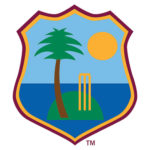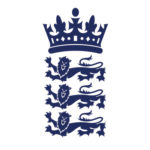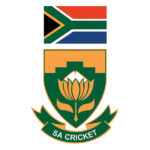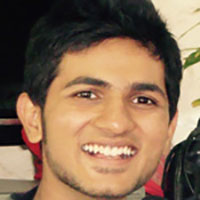The Rise of Windies: A Case Study
The first official recognised test match between England and Australia, 15th March 1877.
17th December 1920 was the first day of international cricket following the World War I which had put a pause on cricket for more than 6 years. The match was played between Australia and England.
29th March 1946, the first test match was played after a gap of almost 6 years due to World War II. This time, the participants of the match were Australia and NewZealand.
5th January 1971 was host to the first ever One Day International between Australia and England.
Cricket World Cup’s first ever match was played on 7th June, 1975 between England and India.
On 28th November, 1978, the first day-night One Day International was played between West Indies and Australia.
In a further shortening of cricket matches, 17th February 2005 witnessed the first ever T20 International match between Australia and NewZealand and revitalised cricket as we know it today.
11th September, 2007 was the day when T20 world cup took birth with a match between South Africa and West Indies. This day was instrumental as it would go on to pave way for multiple franchisee-based t20 leagues around the world.
In yet another move to modernise cricket, day-night test cricket was conceived. 27th of November 2015 was the day(afternoon) of the first such test between Australia and NewZealand.
These are some of the biggest and iconic moments in the sport of cricket; days which would go on to shape the game as we know it today. Coincidentally, in all the moments above, England, Australia and West Indies played a direct role – as one of the participant teams.
It’s only fair that on 8th of July, 2020, England and West Indies, two of the games biggest proponents lock horns in what will be the first international match after a gap of 4 months due to COVID-19 pandemic. It’s almost ironic that, in what will go down as one of the most iconic moments of cricket, fans of the sport will not have an opportunity to witness it in “propria persona”. The stadiums will wear an empty and dejected look, but make no mistake, the sport’s truest fans will be glued to the television sets. 4 months without cricket is nothing as compared to 6 years without it, as had been brought forth by the two world wars, but being helpless about the whole pandemic and being ‘locked’ at home has only amplified the wait.
When it was announced that West Indies would travel to England at least a month before the first test and that they would undergo 14-day quarantine upon their arrival in England, somewhere, Virat Kohli smiled, presumably, in the most smuggest manner, or in a “why-did-I-have-to-say-that!” manner. After all, it was only 5 months ago that Virat Kohli, not-so-subtly, made it known to the BCCI that travelling half-way across the world on the next day of a completed ODI, to play a T20I only 3 days later is not desirable going ahead. BCCI may not have necessarily heeded to his point of view, but as long as the threat of COVID-19 persists, Virat Kohli’s wish has come true, albeit a bit amplified.
Well, that’s enough about COVID-19. The 3-match Test series between England and West Indies give me a perfect opportunity to throw light on a thought I have long been nurturing in my head and in my notebooks – how the West Indies cricket team have risen from the challenges they faced on and off the field, how the numbers may not necessarily corroborate the above statement but how the body language and performances on the field indicate that they have at least begun the process of. All this and more below.
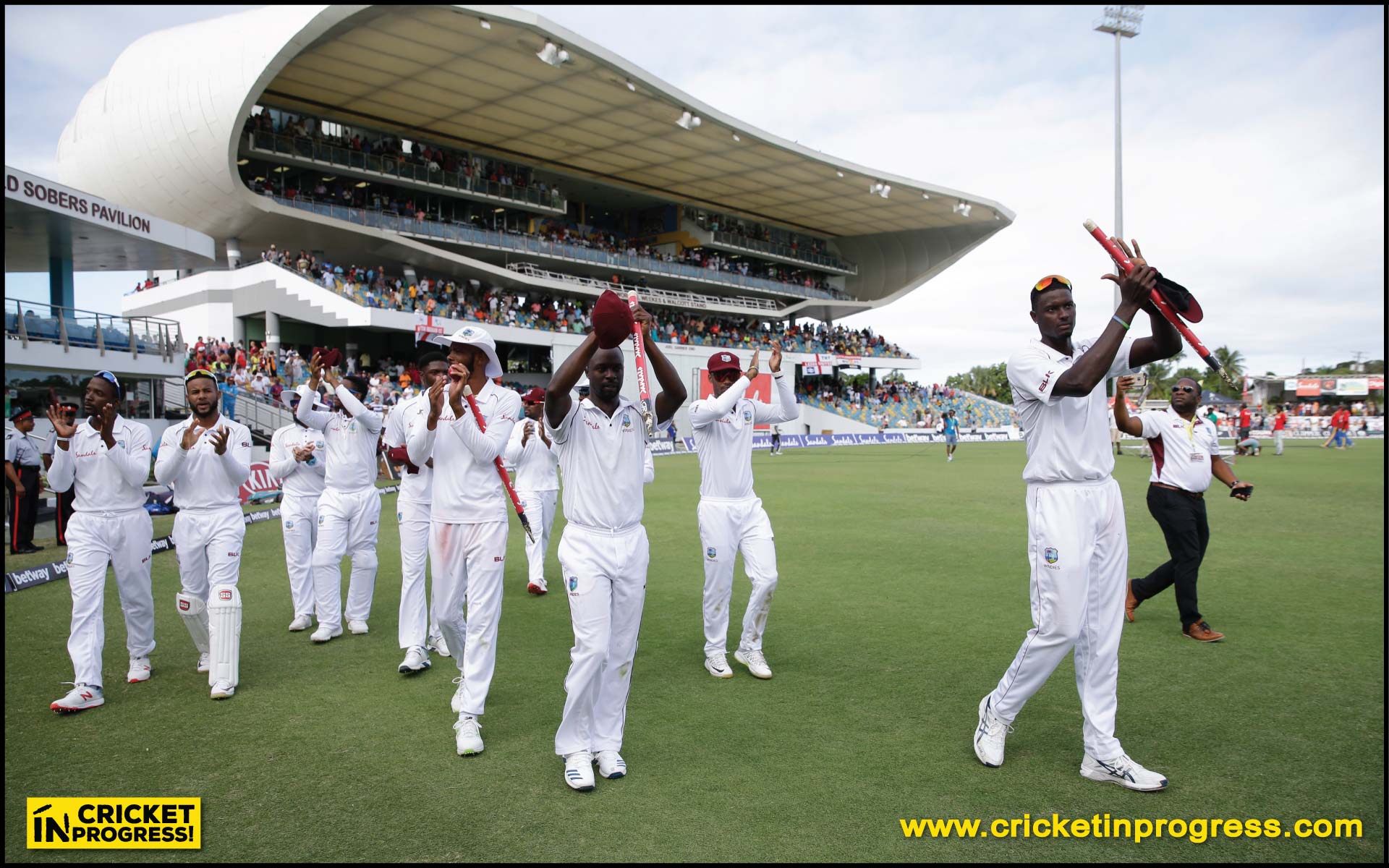
Introduction
When a 23-year old Jason Holder was handed the reigns of West Indies Test Cricket team in 2015, the team had won just 12 out of 50 tests in the since 2010, of which 5 came against Bangladesh, 2 against Zimbabwe, 1 against England (which was ranked 5th at the time), 1 against Pakistan (which was ranked 6th at the time) and 3 against NewZealand (which was ranked 7th and 8th at the time). Under Jason Holder, West Indies has defeated England in England, won a series against England, drawn tests WI had no business drawing and come agonisingly close to winning other matches.
Act I – The Invincibles
From the time West Indies began their cricketing journey in 1928, right until mid 1970s, they were a mediocre force, with the habit of churning out individual greats. The first glimpse of what was to come probably was seen in the 1960s, when the great Frank Worrell was at the helm. Sir Garfield Sobers followed him and did a decent job with the team; decent in comparison of his own performances. Then came the Clive Lloyd and Viv Richards era, during which West Indies were nearly undefeatable. Fearsome fast bowlers and batsman with the proven ability to demolish any bowling attack, led by aggressive and able captains made West Indies the invincibles of the era.
Windies Captains – Over the Years (1928 – Present)
| No | Captain | Span | Played | Won | Lost | Tied | Drawn | W/L | Win % | Loss % | Draw % |
|---|---|---|---|---|---|---|---|---|---|---|---|
| 1 | RK Nunes | 1928-1930 | 4 | 0 | 3 | 0 | 1 | 0.00 | 0.00% | 75.00% | 25.00% |
| 2 | ELG Hoad | 1930-1930 | 1 | 0 | 0 | 0 | 1 | 0.00 | 0.00% | 0.00% | 100.00% |
| 3 | N Betancourt | 1930-1930 | 1 | 0 | 1 | 0 | 0 | 0.00 | 0.00% | 100.00% | 0.00% |
| 4 | MP Fernandes | 1930-1930 | 1 | 1 | 0 | 0 | 0 | 0.00 | 100.00% | 0.00% | 0.00% |
| 5 | GC Grant | 1930-1935 | 12 | 3 | 7 | 0 | 2 | 0.43 | 25.00% | 58.33% | 16.67% |
| 6 | RS Grant | 1939-1939 | 3 | 0 | 1 | 0 | 2 | 0.00 | 0.00% | 33.33% | 66.67% |
| 7 | GA Headley | 1948-1948 | 1 | 0 | 0 | 0 | 1 | 0.00 | 0.00% | 0.00% | 100.00% |
| 8 | GE Gomez | 1948-1948 | 1 | 0 | 0 | 0 | 1 | 0.00 | 0.00% | 0.00% | 100.00% |
| 9 | JDC Goddard | 1948-1957 | 22 | 8 | 7 | 0 | 7 | 1.14 | 36.36% | 31.82% | 31.82% |
| 10 | JB Stollmeyer | 1952-1955 | 13 | 3 | 4 | 0 | 6 | 0.75 | 23.08% | 30.77% | 46.15% |
| 11 | DS Atkinson | 1955-1956 | 7 | 3 | 3 | 0 | 1 | 1.00 | 42.86% | 42.86% | 14.29% |
| 12 | FCM Alexander | 1958-1960 | 18 | 7 | 4 | 0 | 7 | 1.75 | 38.89% | 22.22% | 38.89% |
| 13 | FMM Worrell | 1960-1963 | 15 | 9 | 3 | 1 | 2 | 3.00 | 60.00% | 20.00% | 13.33% |
| 14 | GS Sobers | 1965-1972 | 39 | 9 | 10 | 0 | 20 | 0.90 | 23.08% | 25.64% | 51.28% |
| 15 | RB Kanhai | 1973-1974 | 13 | 3 | 3 | 0 | 7 | 1.00 | 23.08% | 23.08% | 53.85% |
| 16 | CH Lloyd | 1974-1985 | 74 | 36 | 12 | 0 | 26 | 3.00 | 48.65% | 16.22% | 35.14% |
| 17 | AI Kallicharran | 1978-1979 | 9 | 1 | 2 | 0 | 6 | 0.50 | 11.11% | 22.22% | 66.67% |
| 18 | DL Murray | 1979-1979 | 1 | 0 | 0 | 0 | 1 | 0.00 | 0.00% | 0.00% | 100.00% |
| 19 | IVA Richards | 1980-1991 | 50 | 27 | 8 | 0 | 15 | 3.38 | 54.00% | 16.00% | 30.00% |
| 20 | CG Greenidge | 1988-1988 | 1 | 0 | 1 | 0 | 0 | 0.00 | 0.00% | 100.00% | 0.00% |
| 21 | DL Haynes | 1990-1990 | 4 | 1 | 1 | 0 | 2 | 1.00 | 25.00% | 25.00% | 50.00% |
| 22 | RB Richardson | 1992-1995 | 24 | 11 | 6 | 0 | 7 | 1.83 | 45.83% | 25.00% | 29.17% |
| 23 | CA Walsh | 1994-1997 | 22 | 6 | 7 | 0 | 9 | 0.86 | 27.27% | 31.82% | 40.91% |
| 24 | BC Lara | 1997-2006 | 47 | 10 | 26 | 0 | 11 | 0.38 | 21.28% | 55.32% | 23.40% |
| 25 | JC Adams | 2000-2001 | 15 | 4 | 8 | 0 | 3 | 0.50 | 26.67% | 53.33% | 20.00% |
| 26 | CL Hooper | 2001-2002 | 22 | 4 | 11 | 0 | 7 | 0.36 | 18.18% | 50.00% | 31.82% |
| 27 | RD Jacobs | 2002-2002 | 2 | 2 | 0 | 0 | 0 | 0.00 | 100.00% | 0.00% | 0.00% |
| 28 | S Chanderpaul | 2005-2006 | 14 | 1 | 10 | 0 | 3 | 0.10 | 7.14% | 71.43% | 21.43% |
| 29 | RR Sarwan | 2007-2008 | 4 | 0 | 2 | 0 | 2 | 0.00 | 0.00% | 50.00% | 50.00% |
| 30 | D Ganga | 2007-2007 | 2 | 0 | 2 | 0 | 0 | 0.00 | 0.00% | 100.00% | 0.00% |
| 31 | CH Gayle | 2007-2010 | 20 | 3 | 9 | 0 | 8 | 0.33 | 15.00% | 45.00% | 40.00% |
| 32 | DJ Bravo | 2008-2008 | 1 | 0 | 1 | 0 | 0 | 0.00 | 0.00% | 100.00% | 0.00% |
| 33 | FL Reifer | 2009-2009 | 2 | 0 | 2 | 0 | 0 | 0.00 | 0.00% | 100.00% | 0.00% |
| 34 | DJG Sammy | 2010-2013 | 30 | 8 | 12 | 0 | 10 | 0.67 | 26.67% | 40.00% | 33.33% |
| 35 | D Ramdin | 2014-2015 | 13 | 4 | 7 | 0 | 2 | 0.57 | 30.77% | 53.85% | 15.38% |
| 36 | JO Holder | 2015-Present | 32 | 10 | 17 | 0 | 5 | 0.59 | 31.25% | 53.13% | 15.63% |
| 37 | KC Brathwaite | 2017-2019 | 5 | 0 | 4 | 0 | 0 | 0.00 | 0.00% | 80.00% | 0.00% |
Act II – The fall of West Indies
Much like a roller coaster that reaches the top, only to zoom down, West Indies saw a decline in their overall performances. Over the next two and a half decades, despite having some great individuals in the team, individuals who would go on to make big names for themselves at the global level, West Indies cricket team suffered a collapse of tragic proportions. Their burdens were further amplified by the retrospective fact that they never really had a great leader since Sir Richie Richardson. The numbers, too, tell the same story – since Brian Lara took over as a full-time captain, right until Jason Holder’e era, West Indies won only 36 tests out of the 172 they played, losing more than 50% of the games. This dark period was capped by off-the-field issues and controversies, which reached to a point where the first-choice XI of the West Indies declared themselves unavailable owing to pay disputes with West Indies Cricket Board (WICB).
Then came the era of Darren Sammy and Dinesh Ramdin. While off-the-field complications continued between the board and players, on-the-field performances weren’t too great either. 12 wins out of 43 games doesn’t paint a great picture, as West Indies were guilty of losing games even in their own backyard. There was instability with regards to the core players and to be fair, the team was going through a rebuilding phase.
With Dinesh Ramdin’s personal performance as a captain not being noteworthy, and ageing stars like Shivnarine Chanderpaul, Marlon Samuels, Jerome Taylor, Chris Gayle and Suleiman Benn hogging the team, management decided to look in a futuristic direction. Jason Holder was appointed the full-time captain, at the age of 23, which is the second you get test captain for West Indies ever. With Jason Holder, the team took a new and young direction – Shivnarine Chanderpaul, Chris Gayle, Suleiman Benn have not featured since, and Marlon Samuels, Jerome Taylor and Dinesh Ramdin himself featuring in only a few tests in the beginning of Holder’s tenure.
Act III – Perseverance without Success
The beginning of Jason Holder’s captaincy career was no fairytale. The team was whitewashed against Srilanka in Srilanka, lost against Australia in Australia. Against a mighty Indian team in West Indies’ own backyard, they lost 2 and drew 2 tests. They managed to salvage solitary wins in each of the back-to-back series against Pakistan, one in UAE and 1 in West Indies.
In 2017, close to 2 years of Jason Holder’s captaincy, in their tour of England, came the team’s breakthrough moment. While the first and third tests saw West Indies being humbled by the England, the second test was all about West Indies. Punching above their weight, West Indies managed to scale what seemed to be a mountain of a total, on the back of Shai Hope’s twin centuries.
Act IV – The Breakthrough
This is the match where the team really came together. The series scoreline would eventually read 2-1 in favour of England, but the individuals discovered in this tour would go on to make the core of the team in the coming years. Be it the exceptional batting of Kraigg Brathwaite and Shai Hope, or the re-emergence of Kemar Roach as the lead bowler. Be it Jason Holder’s all-round ability or the emergence of Shannon Gabriel as a seamer with wicket-taking abilities. Be it the all-round performance of Roston Chase at the top of the order or the batting partnership of Brathwaite and Shai Hope. The threads for the cloth were available and Jason Holder wasted no time in stitching them together. 3 years and 8 series on, the core of the team remains the same, with the bench strength making up for forced/unforced changes.
By now, you must have known that who I deem to be the focus of this “turnaround” is Jason Holder. There are a certain things Jason Holder did right, in comparison with his predecessors and in comparison with his contemporaries.
Self-belief
What is apparent is Jason Holder’s and the team’s body language is much more positive than their predecessors. What has worked particularly well in favour of this is that the resolution of off-the-field controversies surrounding pay disputes coincided with the beginning of Holder’s time at the helm. With that, the players have a new sense of security and interests while playing for their national team.
Core players
Unlike his predecessors, who didn’t necessarily have the luxury of sticking with core players, Jason Holder has identified his core players and constructed his team around them. There’s no apparent weakness in any department – batting group revolves around Shai Hope and Kraigg Brathwaite, with other batsmen making useful contributions time and again, Roston Chase and Jason Holder being consistent all-rounders, each with their different trade providing unparalleled stability to their team, fast bowling ably led by a resurgent Kemar Roach and the aggressive Shannon Gabriel and supported by the wicket-taking captain himself.
This is well supported by statistics as well. In the 32 matches that Jason Holder has captained, only 30 players have been used, of which 10 players have played more than 50% of the games. This is on-par with Virat Kohli and Kane Williamson, clearly the 2 best teams and captains during the time of Jason Holder.
Another key difference in Jason Holder’s team and that of his predecessors is that players have been able to forge key partnerships among them. The most notable ones are the batting top-order batting partnership between Kraigg Brathwaite and Shai Hope and the surprisingly successful lower-order batting partnership between Shane Dowrich and Jason Holder, each averaging above 50 for 19 innings.
Personal Performance
Being a fast-bowling all-rounder captain is no easy job; ask Kapil Dev, Imran Khan and Shaun Pollock. Jason Holder’s personal performance, both as a batsman and a bowler, during his captaincy has been outstanding. 1518 runs at 32.29 which includes 2 centuries and 6 half-centuries clubbed with 90 wickets at an impressive average of 24.77. I needn’t mention that a captain leading their team from the front is a real confidence-booster for the team.
| Sr No | Captain | Team | From | To | Matches Played | Matches Won | Matches Lost | Matches Drawn | Batting Runs | Batting Average | 50s | 100s | Bowling Wickets | Overs | Average | SR | ER | Total Players Used | Replacements after 1st match | Player changes Per match |
|---|---|---|---|---|---|---|---|---|---|---|---|---|---|---|---|---|---|---|---|---|
| 1 | Steve Smith | Australia | 10/15 | 3/18 | 31 | 17 | 10 | 4 | 3104 | 67.47 | 12 | 12 | 1 | 41.1 | 141 | 247 | 3.42 | 30 | 19 | 0.63 |
| 2 | Tim Paine | Australia | 3/18 | Present | 19 | 9 | 7 | 3 | 705 | 26.11 | 4 | 0 | - | - | - | - | - | 25 | 14 | 0.78 |
| 3 | Alastair Cook | England | 10/15 | 12/16 | 21 | 7 | 10 | 4 | 1464 | 40.66 | 9 | 2 | - | - | - | - | - | 26 | 15 | 0.75 |
| 4 | Joe Root | England | 12/16 | Present | 39 | 20 | 15 | 4 | 3005 | 42.92 | 21 | 6 | 13 | 203.1 | 52.38 | 93.7 | 3.35 | 35 | 24 | 0.63 |
| 5 | Virat Kohli | India | 10/15 | Present | 49 | 31 | 10 | 8 | 4446 | 60.90 | 11 | 16 | - | 5.1 | - | - | 2.70 | 32 | 21 | 0.44 |
| 6 | Misbah-ul-Haq | Pakistan | 10/15 | 5/17 | 16 | 8 | 8 | 0 | 1168 | 43.25 | 9 | 2 | - | - | - | - | - | 24 | 13 | 0.87 |
| 7 | Sarfraz Ahmed | Pakistan | 9/17 | 1/19 | 13 | 4 | 8 | 1 | 568 | 25.81 | 5 | 0 | - | - | - | - | - | 22 | 11 | 0.92 |
| 8 | Azhar Ali | Pakistan | 11/16 | Present | 6 | 2 | 3 | 1 | 309 | 30.9 | 1 | 1 | - | 8 | - | - | 4 | 22 | 11 | 2.2 |
| 9 | Brendon McCullum | NewZealand | 10/15 | 2/16 | 7 | 2 | 4 | 1 | 445 | 37.08 | 2 | 1 | - | - | - | - | - | 30 | 19 | 3.17 |
| 10 | Kane Williamson | NewZealand | 7/16 | Present | 32 | 18 | 8 | 6 | 2439 | 54.2 | 13 | 8 | - | 21 | - | - | 3.71 | 27 | 16 | 0.52 |
| 11 | Hashim Amla | South Africa | 11/15 | 1/16 | 6 | 0 | 4 | 2 | 338 | 33.8 | 0 | 1 | - | - | - | - | - | 18 | 7 | 1.4 |
| 12 | AB de Villiers | South Africa | 1/16 | 12/17 | 3 | 2 | 1 | 0 | 89 | 17.8 | 1 | 0 | - | - | - | - | - | 20 | 9 | 4.5 |
| 13 | Faf du Plessis | South Africa | 8/16 | 1/20 | 36 | 18 | 15 | 3 | 2219 | 38.92 | 13 | 5 | - | - | - | - | - | 36 | 25 | 0.71 |
| 14 | Angelo Matthews | Srilanka | 10/15 | 1/17 | 13 | 5 | 7 | 1 | 669 | 27.87 | 4 | 0 | 4 | 128 | 78 | 192 | 2.43 | 24 | 13 | 1.08 |
| 15 | Dinesh Chandimal | Srilanka | 7/17 | 2/19 | 17 | 4 | 8 | 5 | 1228 | 40.93 | 6 | 3 | - | - | - | - | - | 29 | 18 | 1.13 |
| 16 | Suranga Lakmal | Srilanka | 6/18 | 11/18 | 5 | 3 | 2 | 0 | 72 | 14.4 | 0 | 0 | 67 | 9 | 22.66 | 44.6 | 3.04 | 18 | 7 | 1.75 |
| 17 | Dimuth Karunaratne | Srilanka | 2/19 | Present | 8 | 4 | 2 | 2 | 536 | 38.28 | 2 | 1 | 8.3 | 1 | 32 | 51 | 3.76 | 16 | 5 | 0.71 |
| 18 | Jason Holder | West Indies | 10/15 | Present | 32 | 10 | 17 | 5 | 1518 | 32.29 | 6 | 2 | 90 | 883.2 | 24.77 | 58.8 | 2.52 | 30 | 19 | 0.61 |
Conclusion
The numbers will not tell you the complete story but the process to reach to the desired outcome is in motion. With a young and experienced team, I don’t see this team going anywhere but up. That being said, there will be the occasional hiccups which will test the strength of Jason Holder as a captain as well as an individual and that will determine in what league he will ultimately fall into. A few years ago, West Indies were considered an easy walkover. Not anymore. Opponents will need to earn their victories against this team.
The 3-test series against England promises to be an exciting one, not only because it is the first one following COVID-induced stoppage, but also the teams involved each have their own set of challenges which they will be looking to address. Amidst all this, don’t expect West Indies to perform out of their skin, but definitely expect them to perform better than they did in 2017.
With this, I sign off. Remember to tune in to the first international match in the times of COVID-19 on 8th July 2020 at 3:30 PM IST. It will be worth being part of such an iconic moment.
You can download the statistics from here.
